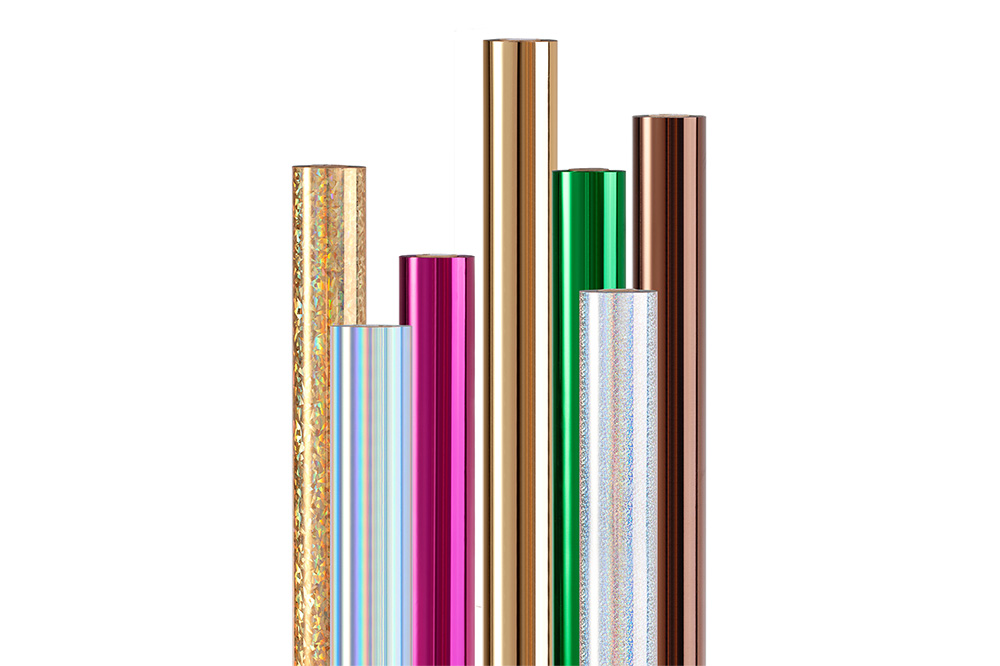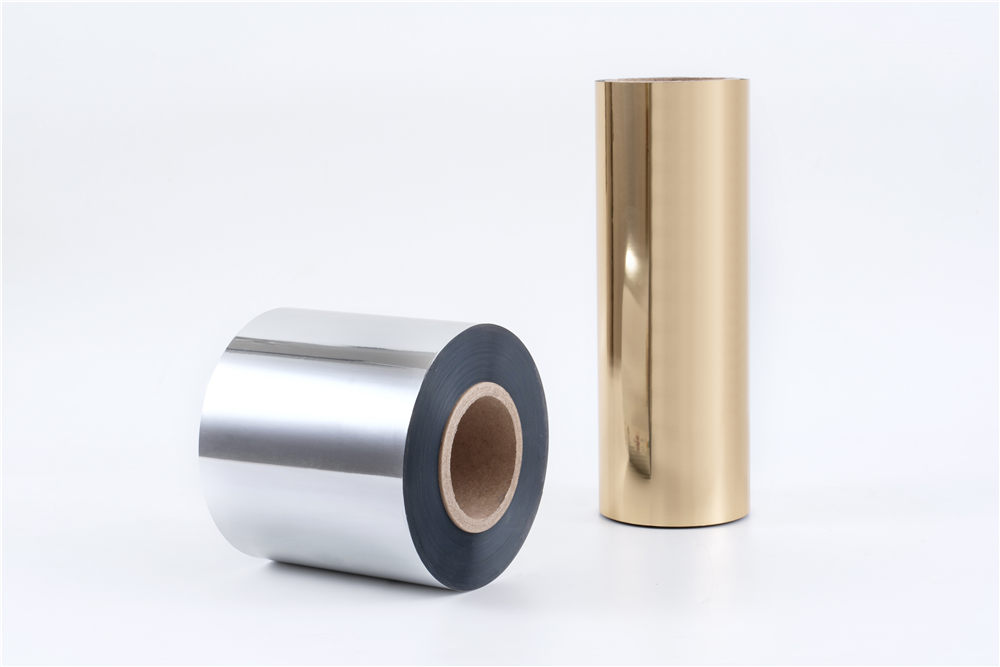Comparing Hot and Cold Foil Printing
In the competitive world of premium packaging and brand presentation, every surface detail matters. The shimmer of metallic foil can turn an ordinary box or label into something that feels high-value and collectible. But behind that gleam lies a crucial production choice: hot foil printing or cold foil printing.
At first glance, both seem to do the same thing — applying a metallic finish to paper or film. In practice, though, the processes, equipment, and even the feel of the final product differ in meaningful ways. Understanding those differences helps packaging designers, printers, and brand owners make smarter production decisions.
How Hot Foil Printing Works in Practice?
Hot foil printing, often called hot foil stamping, is one of the oldest finishing methods still used in modern packaging lines. The technique involves four main components:
● A heated die (usually brass, copper, or magnesium), engraved with the desired artwork.
● A metallic foil roll, composed of a polyester carrier film, a release layer, an adhesive, and the thin metallic layer itself.
● A substrate — such as coated board, kraft paper, or even leather.
● A hot stamping machine that applies both heat (typically between 90°C and 180°C) and pressure (between 2 and 5 tons depending on area).
When the heated die presses the foil against the substrate, the adhesive activates and bonds the metallic layer precisely where the die touches. Once the die lifts, the carrier film peels away cleanly, leaving behind a crisp metallic imprint.
One reason designers love hot stamping is that it can create a tactile effect. When the die is slightly deeper, the foil becomes embossed, giving logos and text a raised, physical texture. You'll find this effect on perfume boxes, chocolate gift packaging, luxury invitation cards, and premium whiskey labels.
From a manufacturing standpoint, hot foil stamping requires careful die alignment and temperature control. If the pressure is too high, the paper fibers may bruise; too low, and the foil won't adhere evenly. Skilled operators spend years learning how to balance foil tension, dwell time, and die temperature to achieve consistent results.
However, setup is time-consuming. Every design needs a new die, and switching foil colors mid-run can take 30–40 minutes. For long production runs — such as 100,000 perfume cartons — this isn't a problem. But for small runs, it can add cost and downtime.
How Cold Foil Printing Differs Technically?
Cold foil printing, on the other hand, takes an entirely different approach. Instead of using heat and dies, it integrates foil transfer directly into the offset or flexographic printing line.
Here's how it works:
● A UV-curable adhesive is printed in the shape of the artwork using a standard printing plate or flexo unit.
● The foil web is pressed against the adhesive under pressure from an impression roller.
● A UV lamp cures the adhesive instantly, fixing the foil only to the printed areas.
● The unused foil is rewound and discarded.
Because there's no need for heating or metal dies, cold foiling runs fast — up to 150–180 meters per minute on modern flexo presses. This makes it ideal for self-adhesive labels, cosmetic sleeves, pharmaceutical cartons, and food packaging films.
Unlike hot foil stamping, cold foiling stays completely flat — there's no emboss. But it can achieve fine details and variable data that are impossible with traditional dies.
Designers often take advantage of this by printing color layers over silver foil, producing dozens of metallic tones — golds, blues, coppers — without changing the foil roll. That's a major cost advantage for short-run promotional packaging and limited-edition labels.
Side-by-Side Comparison of Results
If you line up two products — one with hot foil, one with cold — the differences become clear under good lighting.
| Feature | Hot Foil Printing | Cold Foil Printing |
| Appearance | Deep, mirror-like metallic shine | Slightly softer, satin metallic effect |
| Texture | Can be embossed or debossed | Flat, smooth surface |
| Detail Resolution | Best for bold logos and type | Excellent for fine lines and gradients |
| Production Speed | Moderate (manual setup) | Very high (inline process) |
| Setup Cost | High (dies, make-ready) | Low (no dies) |
| Suitable For | Luxury boxes, premium stationery | Labels, cartons, flexible packaging |
So when a cosmetics manufacturer wants raised gold lettering on a rigid perfume box, they'll choose hot foil. When a beverage company needs a metallic finish on a million bottle labels with tight delivery schedules, cold foil makes far more sense.
Equipment and Material Considerations
Hot Foil Printing
In hot foil printing, the process relies on a flatbed or rotary hot stamping system equipped with precise temperature, pressure, and dwell-time controls. Flatbed machines are commonly used for rigid substrates such as folding cartons and premium boxes, while rotary systems are preferred for continuous roll-fed materials like labels.
The foil roll typically consists of several layers — a polyester carrier film, a release layer, a metallic or pigment layer, and a heat-activated adhesive. The selection of foil grade depends on both the surface type and the visual effect required. For example, high-gloss foils demand smooth, coated paper or laminated board, while matte or holographic foils can be used on textured or uncoated materials.
Maintaining proper temperature and pressure calibration is critical. Even small deviations can lead to uneven foil transfer or “patchy” results. Many production lines now use closed-loop temperature control and servo-driven pressure systems to maintain consistency during long runs.
Cold Foil Printing
In cold foil printing, the setup is quite different. A UV-curable adhesive is applied to the desired areas using a printing unit — often flexographic or offset — followed by a foil transfer module that precisely aligns and laminates the foil. The system relies heavily on web tension balance, adhesive viscosity, and curing intensity. Improper UV curing can lead to poor adhesion, while excessive adhesive film thickness may blur fine lines.
The substrate surface energy also matters. Cold foil requires a clean, well-coated surface for optimal bonding; dust or oil contamination can significantly reduce transfer quality. Many printers perform a dyne test or a contact angle test before production to ensure the surface tension meets the required level.
For both techniques, foil storage conditions are often overlooked but essential. Foils should be kept in a controlled environment — ideally 20–25°C and 40–60% relative humidity — to prevent curling, adhesive degradation, or static buildup. Proper handling during loading and rewinding minimizes waste and ensures a smoother transfer during production.
Choosing the Right Foil Method
Here's a quick rule of thumb used by many printing suppliers and packaging converters:
● Choose hot foil when you want premium tactile quality, deep shine, and long production runs. Think of luxury cosmetics, perfume boxes, or corporate invitations.
● Choose cold foil when you need speed, fine detail, and integration with color printing — perfect for labels, cartons, or digital short runs.
Some modern presses even combine both, allowing printers to run cold foil inline for base decoration and hot foil offline for embossed highlights — giving brands the best of both worlds.
Conclusion
Foil printing isn't just a finishing touch; it's a brand statement. Hot foil printing brings a sense of craftsmanship, texture, and exclusivity that defines luxury packaging. Cold foil printing, meanwhile, represents the evolution of efficiency — faster, flexible, and perfectly aligned with modern print workflows.
Whether you're producing limited-edition wine labels, cosmetic cartons, or premium promotional boxes, the right foil method can make the difference between good packaging and unforgettable packaging.
Dragon Foils offer both foils. Browse Hot stamping foils and Cold foils for more detailed information.


